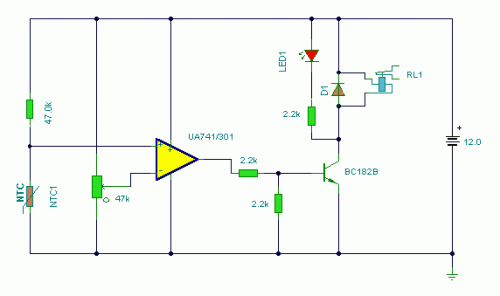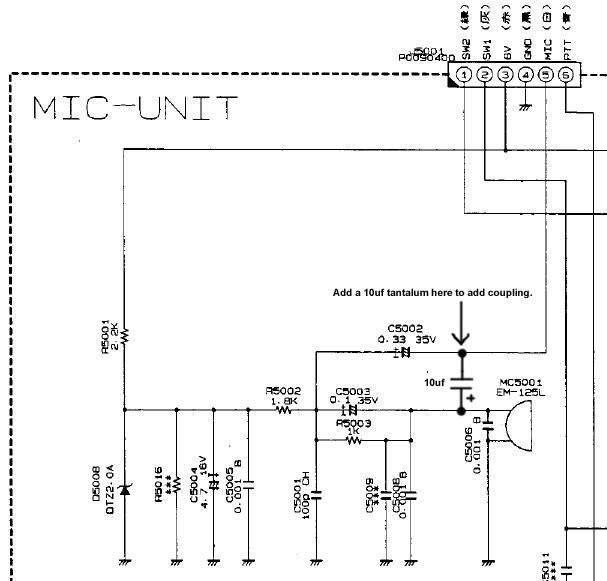
Audio Perimeter Monitor

Using a single cable such as speaker wire or doorbell cable, this circuit can be remotely positioned, for example, at the bottom of a garden or garage, and used to detect all sound in that area. The cable can be buried in a hosepipe or duct and is concealed out of sight. The mic is an ordinary dynamic mic insert and should be housed in a waterproof enclosure with the rest of the circuit.
This circuit design utilizes a dynamic microphone connected through a single cable, allowing for versatile placement in remote locations such as gardens or garages. The choice of a speaker wire or doorbell cable facilitates easy installation and concealment, ensuring the system remains unobtrusive.
The microphone, which is sensitive to sound waves, captures audio signals and converts them into electrical signals. To enhance durability and functionality, the microphone must be placed within a waterproof enclosure to protect against environmental factors such as moisture and dust. This is critical for maintaining the integrity of the circuit in outdoor settings.
The circuit can be powered using a standard low-voltage power supply, ensuring safety and efficiency. The audio signals captured by the microphone can be processed using a simple amplifier circuit to boost the signal strength, making it suitable for further processing or transmission. For instance, the amplified signal could be sent to a remote speaker system or a recording device.
Proper grounding and shielding techniques should be employed to minimize interference from external noise sources. The cable should be routed carefully to avoid physical damage, and the microphone should be positioned to optimize sound capture while remaining discreet.
In summary, this circuit design offers a practical solution for remote sound detection, leveraging common materials and straightforward circuitry to create an effective audio surveillance system.Using a single cable such as speaker wire or doorbell cable, this circuit can be remotely positioned, for example, at the bottom of a garden or garage, and used to detect all sound in that area. The cable can be buried in a hosepipe or duct and is concealed out of sight. The mic is an ordinary dynamic mic insert and should be housed in a waterproof enclosure with the rest of the circuit.
🔗 External reference
This circuit design utilizes a dynamic microphone connected through a single cable, allowing for versatile placement in remote locations such as gardens or garages. The choice of a speaker wire or doorbell cable facilitates easy installation and concealment, ensuring the system remains unobtrusive.
The microphone, which is sensitive to sound waves, captures audio signals and converts them into electrical signals. To enhance durability and functionality, the microphone must be placed within a waterproof enclosure to protect against environmental factors such as moisture and dust. This is critical for maintaining the integrity of the circuit in outdoor settings.
The circuit can be powered using a standard low-voltage power supply, ensuring safety and efficiency. The audio signals captured by the microphone can be processed using a simple amplifier circuit to boost the signal strength, making it suitable for further processing or transmission. For instance, the amplified signal could be sent to a remote speaker system or a recording device.
Proper grounding and shielding techniques should be employed to minimize interference from external noise sources. The cable should be routed carefully to avoid physical damage, and the microphone should be positioned to optimize sound capture while remaining discreet.
In summary, this circuit design offers a practical solution for remote sound detection, leveraging common materials and straightforward circuitry to create an effective audio surveillance system.Using a single cable such as speaker wire or doorbell cable, this circuit can be remotely positioned, for example, at the bottom of a garden or garage, and used to detect all sound in that area. The cable can be buried in a hosepipe or duct and is concealed out of sight. The mic is an ordinary dynamic mic insert and should be housed in a waterproof enclosure with the rest of the circuit.
🔗 External reference





